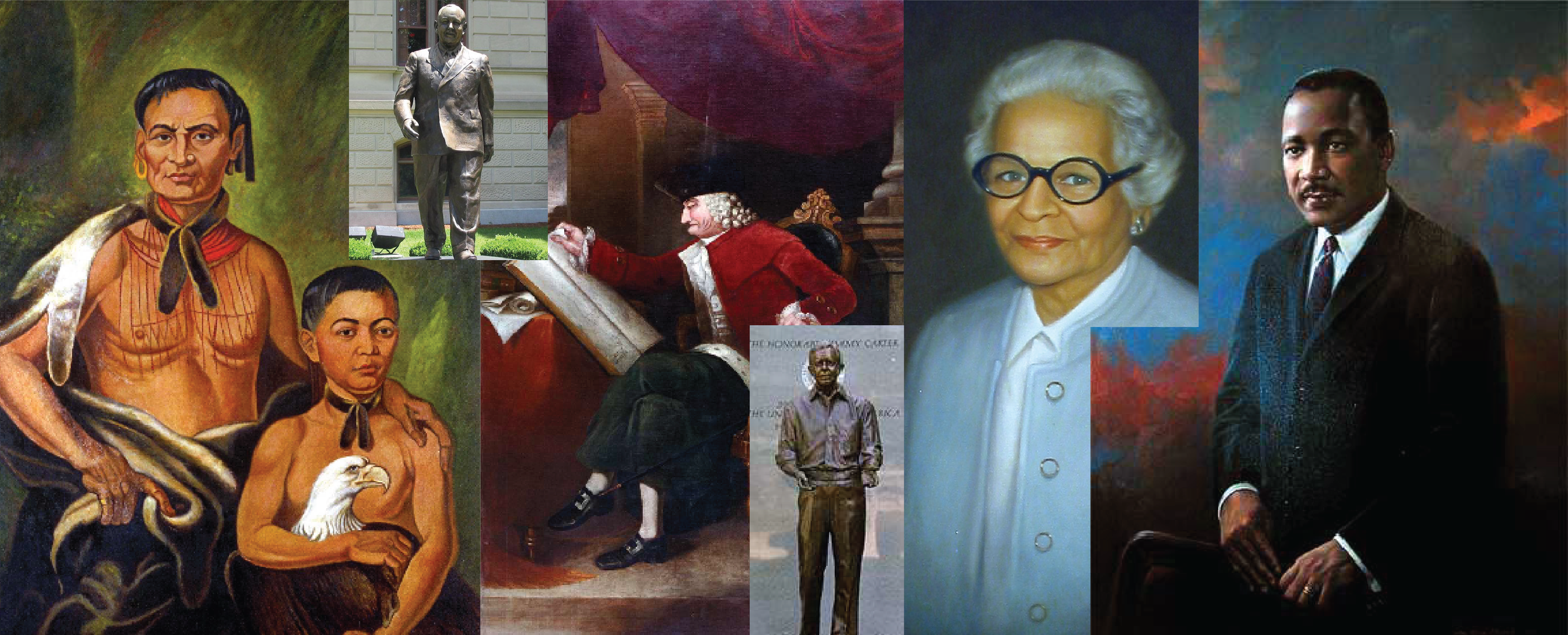
Art Collection
In 1825, the Georgia state government commissioned life-size portraits of James Oglethorpe, George Washington, Thomas Jefferson, Benjamin Franklin, and Marquis de Lafayette to be displayed in the Milledgeville Capitol. These five paintings became the foundation of an art collection that now numbers close to 300 portraits, sculptures, and other memorials. The completion of the Capitol building in 1889 led to the acquisition of most of the current collection. With little money at the time of building to be used on interior painting or grand murals, portraits became an easy way to embellish the public spaces while honoring individual Georgians. Starting in 1907 with the equestrian statue of John Brown Gordon, sculptures and plaques began to populate the Capitol grounds.
Without a definitive display plan, artworks were placed wherever there was space on the wall; this led to a crowded, unorganized collection by the mid 1990s. During a massive renovation of the Capitol in the late 1990's an arts collection policy for the Capitol Art Collection was created establishing a more aesthetically pleasing space. This meant, however, that some portraits were placed in storage.
This collection is important to the citizens of Georgia. Not only does it represent almost two centuries of American portraiture, it also provides a window on how Georgians in the past chose to honor their leaders and, in so doing, a glimpse into the values they believed to be most important.
Browse the Capitol Art Collection in the Georgia Archives Virtual Vault.
Permanent Exhibits
Located primarily on the 4th floor of the Georgia Capitol, the permanent exhibition focuses on the Georgia Capitol and State Government. Highlights include models of both Miss Freedom and the Capitol Dome, Governors' artifacts, and a replica of the Capitol time capsule.
Georgia’s Official State Symbols can be viewed in a case on the 4th floor along with artifacts from Georgia’s earliest populations. There are also numerous exhibits that feature Georgia’s natural resources, including dioramas that display the major climate regions of Georgia: mountains, piedmont, plain, swamp, and coast.
Explore the exhibits and building with help from the museum's scavenger hunts and lesson plans and activities.

